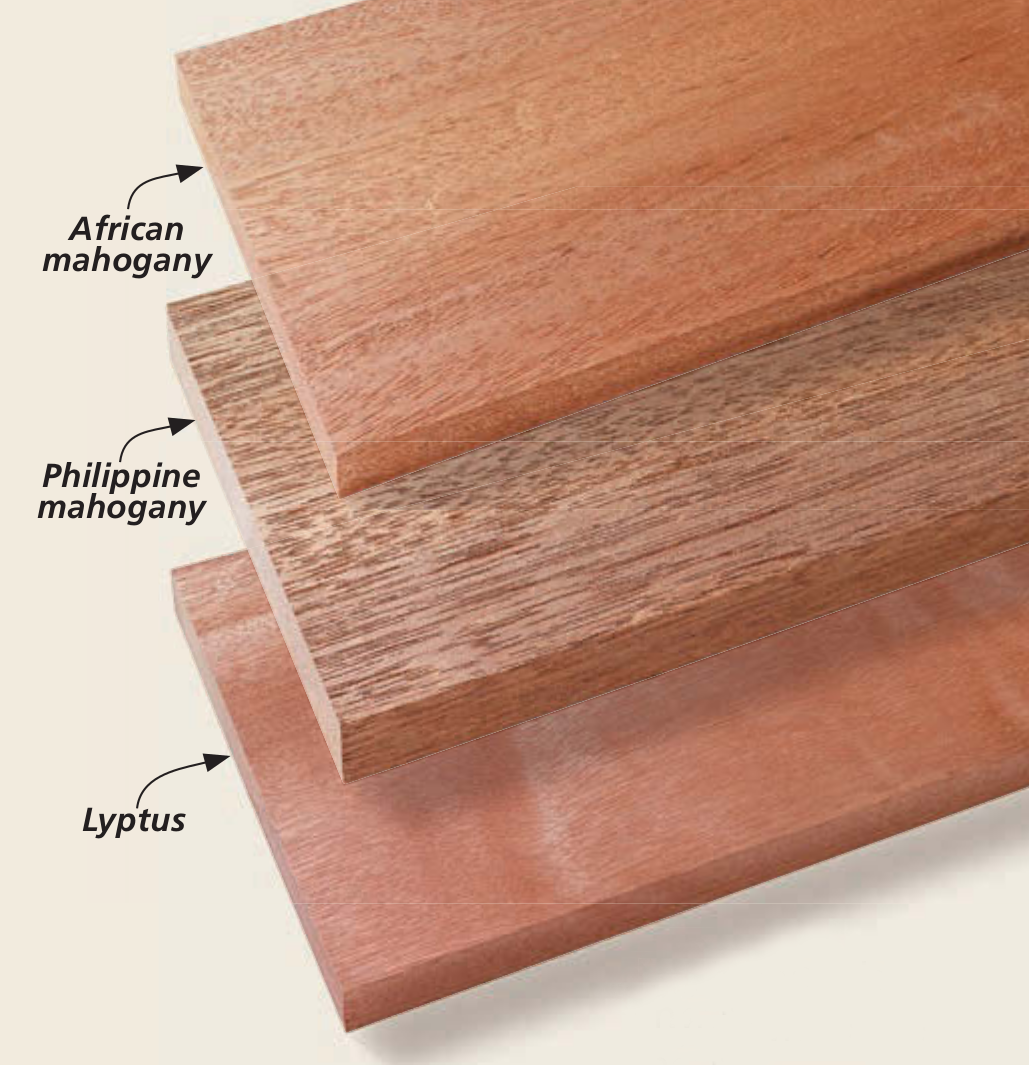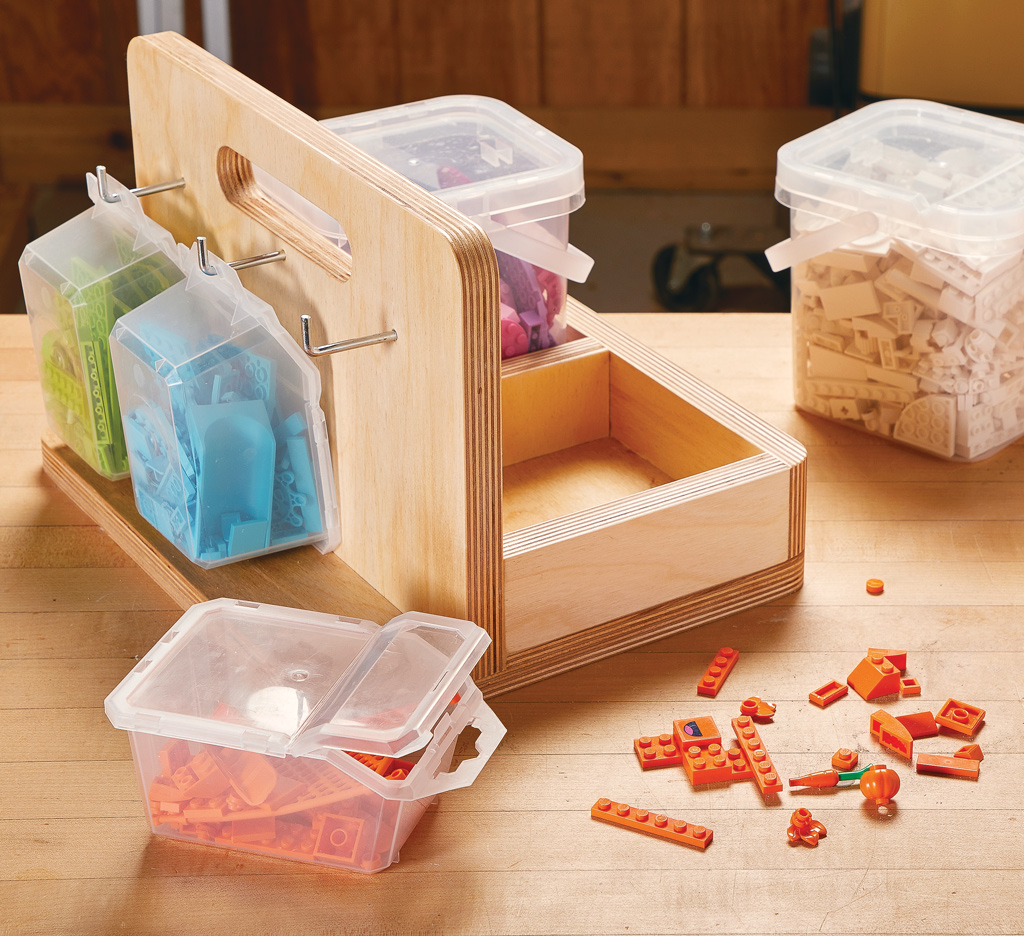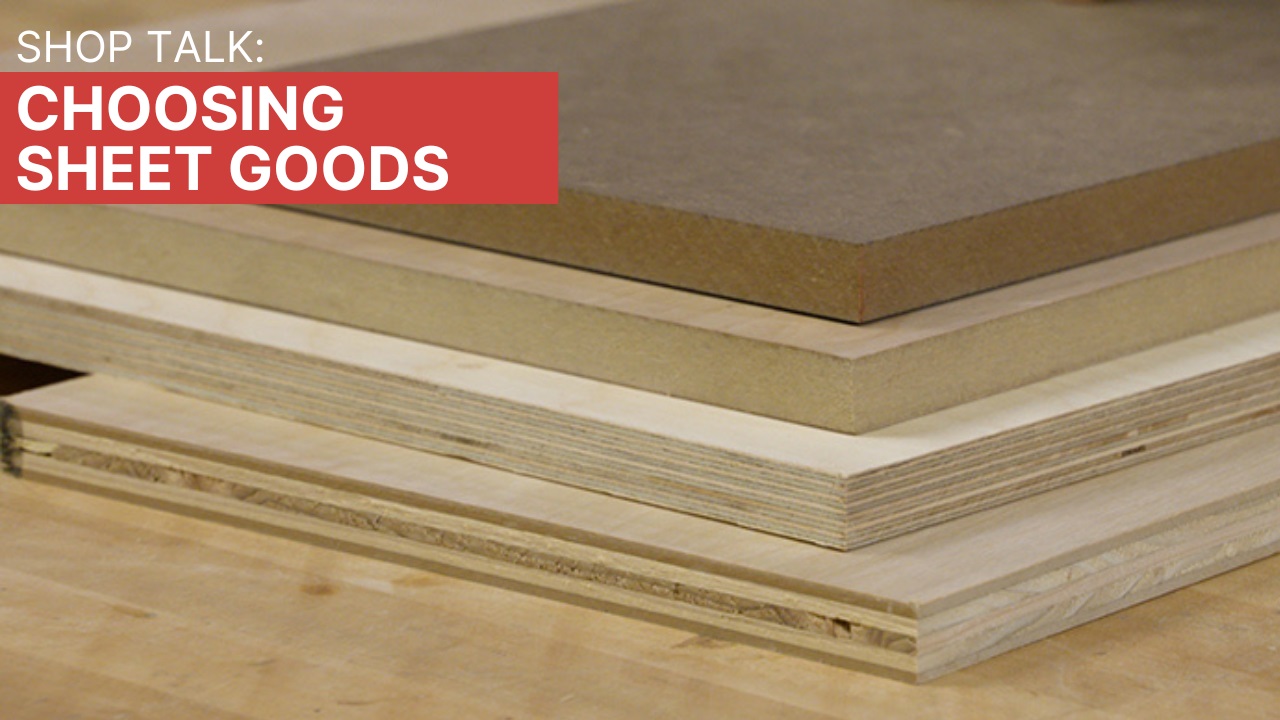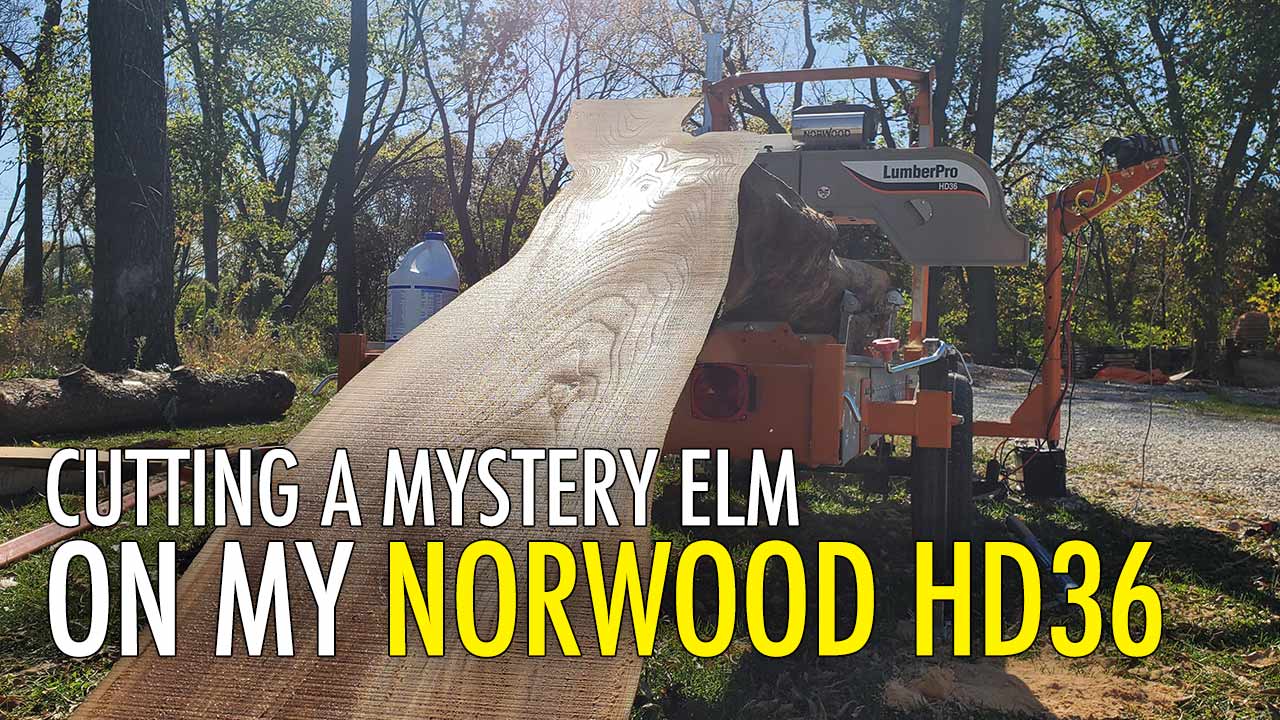
Mahogany has long been considered one of the premier cabinet woods of the world. And from my experience, I would definitely agree with that assessment. Mahogany combines all the characteristics that a woodworker desires in a project wood.

But this popularity and reputation for quality creates a measure of confusion and raises a few questions. Is all wood that’s marketed as mahogany the same? And what makes mahogany such a desirable wood?
THE REAL ITEM. Let’s start with a discussion of the first question. The simple answer is no, not all wood labeled as mahogany is the same. Due to its popularity, mahogany has a lot of imitators, look-alikes, and substitutes.
There are probably a dozen or more woods that are called mahogany of one sort or another. Some are related, while others are not. But only one species available today can honestly be called true mahogany — Swietenia macrophylla . (Two other closely related, true mahogany species are no longer commercially available.)
You’ll find this species also referred to as genuine mahogany, Honduran mahogany, or South American mahogany. The trees grow throughout Central America and the northern part of South America. This mahogany is the reddish-brown cabinet wood that was quickly adopted by European and American cabinetmakers as early as the mid-17 th century.
WHY MAHOGANY? Once you work with mahogany and get to know its characteristics, you’ll be hard pressed to find any faults or shortcomings. No wood is perfect, but mahogany might come closer than any of the others.
APPEARANCE. Mahogany is first and foremost known for its attractive appearance. Although it can vary considerably, the initial color is usually a medium reddish brown. However, with exposure to light, the color gradually ages to a rich, dark reddish brown. If the color of the wood throughout a project is consistent and you can be patient, mahogany doesn’t need a stain.
The figure of mahogany is extremely variable. And this feature also adds to the appeal. Some boards may exhibit a wild, swirling pattern while others appear more subdued. When mahogany is quartersawn, you get a striped or ribbon figure effect.
Although generally only available in veneer form, mahogany crotch figure is often used as an eye-catching accent (main photo on the opposite page).
STABILITY. All woods shrink and swell with changes in moisture content, but among different types of wood, the range can be considerable. This characteristic is called stability and mahogany has the distinction of being near the very top of the list. Mahogany exhibits little movement across the grain and little tendency to cup or warp. For woodworkers, this is a big plus.

WORKABILITY. In general, mahogany is a joy to work with. Mahogany has a pore structure similar to that of walnut. The pores are of moderate size and evenly distributed. This gives the wood an even texture and also contributes to the attractive appearance.
The density can vary, but falls in a range that makes it very easy to cut with both hand and power tools. You’ll find that it holds fine details very well and is an excellent carving wood.
Mahogany glues without any of the problems associated with some tropical species. Likewise, it accepts any finish. However, if a smooth surface is desired, you’ll have to fill the pores.

AVAILABILITY & COST. In the distant past, 24"-wide tabletops made from a single mahogany board were not uncommon. But today, stock of this quality is hard to find. Mahogany is now monitored for sustainable harvests. This has the effect of limiting its availability and raising the cost. It’s become one of the pricier woods in the rack, but is still below the cost of many other exotics.
RELATIVES & SUBSTITUTES. If you’d like to switch to a lower cost “mahogany-like” wood, you have a number of good choices. The photo above and the chart below offer several options. Some of these look-alikes are botanically related to mahogany while others simply share a general resemblance to it. And although not the real thing, they’re all quality woods in their own right.
African mahogany is a second cousin to genuine mahogany and based on appearance alone, the two can often be difficult to tell apart. As genuine mahogany becomes more difficult to obtain and more expensive, African mahogany is usually the substitute of choice for higher quality uses. It’s not as stable, not quite as easy to work with, and won’t age like true mahogany. But overall, it comes pretty close to the real thing. And you’ll find the cost much easier on the wallet.
Wood marketed as Philippine mahogany (also called Lauan) is a different story. It’s actually several species that are not related to mahogany. It simply looks similar. In the recent past, it was used extensively for trim, cabinets, and furniture. It has fairly good working properties, but the color and figure are less desirable.
Lyptus recently entered the market as a low-cost, all-around utility wood with a mahoganylike appearance. It’s actually a hybrid of two Eucalyptus species. Very fast growing, it’s considered a good “green” mahogany substitute. However, you’ll find it rates considerably lower in both stability and workability.
True mahogany is a wood that’s well worth seeking out for a special project. However, the best news is that there’s a “mahogany” to suit almost any use.













